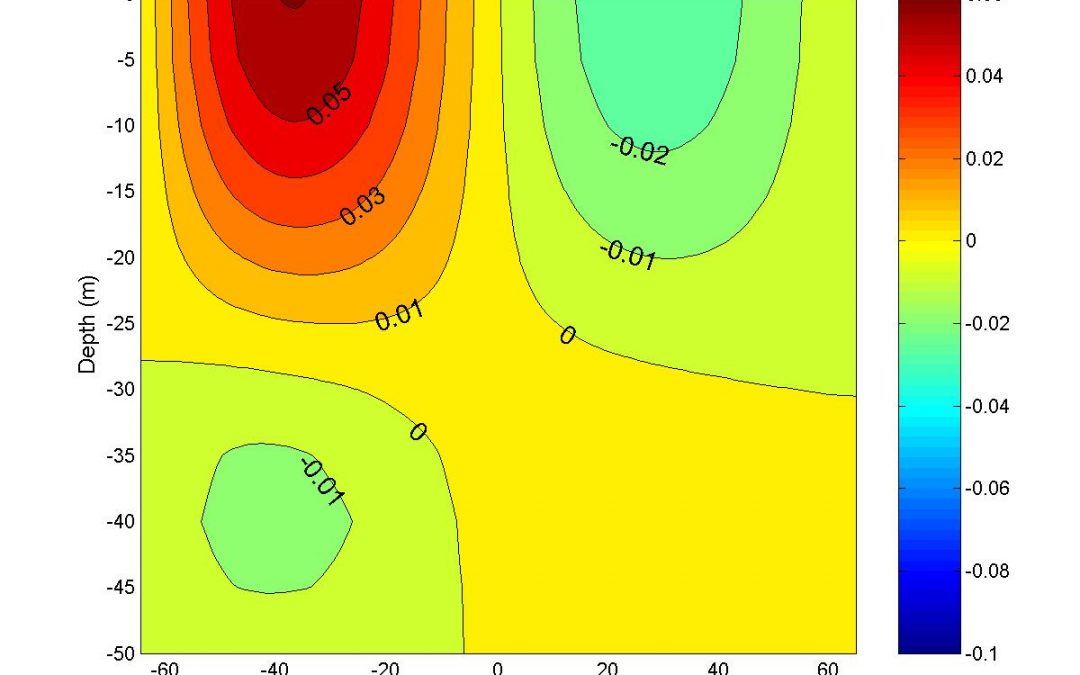A simple diagnostic model, reproducing circulation in lakes and marginal seas in which low-density waters are found close to the coasts while high-density waters dominate the offshore areas, is developed. An explicit solution is obtained for the central transverse section of an elongated basin, assuming that the Boussinesq and hydrostatic approximations are valid and that the alongshore variability vanishes. The model reveals cyclonic circulation that may either extend throughout the vertical (type C) or may top anticyclonic circulation developed in the bottom layer (type C/A). With the amplitude of the imposed density anomaly being fixed, the flow type is controlled by the frictional processes and by the basin dimensions. In a typical basin, type C/A flow is supported by weak bottom and vertical friction and by moderate lateral friction, unlike type C flow, which is supported by moderate bottom and vertical friction and by weak lateral friction. Strong frictional influence, especially in the basin interior, suppresses the flow everywhere. The flow is also suppressed in a basin that is narrow O(1 km) and shallow O(10 m), even without the frictional control being too strong. A basin that is narrow and deep favors type C/A flow, whereas a basin that is wide and shallow tends to support type C flow. The theoretical findings are related to observations, particularly those originating from the Adriatic Sea where type C flow prevails but may occasionally be replaced by type C/A flow, as well as to previous modeling results.
Cyclonic versus Anticyclonic Circulation in Lakes and Inland Seas (PDF Download Available). Available from: https://www.researchgate.net/publication/240687870_Cyclonic_versus_Anticyclonic_Circulation_in_Lakes_and_Inland_Seas [accessed Jun 27, 2017].

